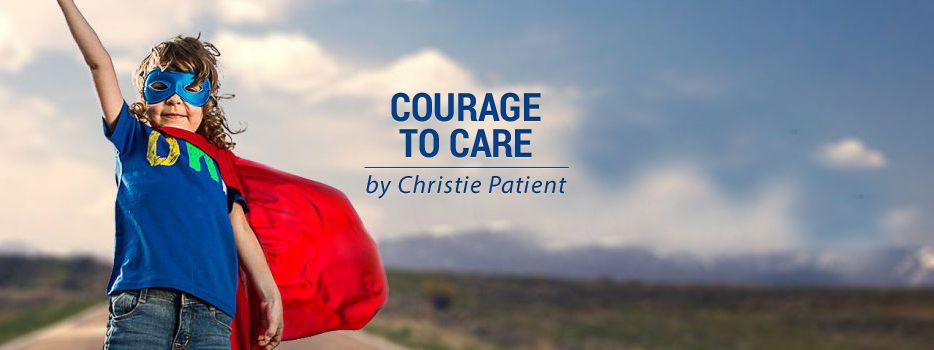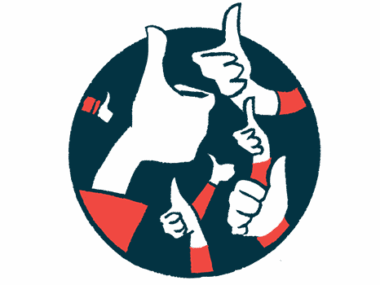I’m Trading ‘Coping’ for ‘Hoping’ Thanks to the COVID-19 Vaccine
Written by |

Last month we moved into our new home in Hawaii. My husband, Jonny, flew back to the mainland immediately for several months of Army training, so I was left to get settled on my own. I started tearing through all the boxes and piles of things to make the place functional. After a few days working on the essentials — bed, kitchen, bathroom — I realized that I needed to set up my office. My hiatus from work was coming to an end.
Once I connected all the cables for my desktop and completed a side quest to buy a wireless adapter necessary to run my word processor, I texted my mom for column ideas. I had a few, but they were incomplete and uninspiring. I often brainstorm with my mom, Holly, before writing columns. It’s important that I get her point of view on topics that relate to her idiopathic pulmonary fibrosis (IPF) and lung transplant experience so that I tell the story the right way. She often says things that help me make my content more relatable for my patient-readers.
Even if I have a great idea, it helps to talk to her about it. Since her medical history is at the heart of this family story, her input is a key part of my process. That week, I was already running short on time, ideas, and patience. My day had been frustrating, my month had been exhausting, and my brain wasn’t offering me any gold nuggets.
When I explained the situation to my mom, she suggested I write about hope — she thought I could use a little to lighten the mood. I had absolutely nothing to say about hope, because I did not feel hopeful. I wrote instead about fear.
Today, I feel like writing about hope.
Today, my parents both received their first COVID-19 vaccine.
Today, and every day since they were able to schedule their appointments, I have felt hope. Finally. I knew this day was coming, but I didn’t anticipate being so emotional about it. I have been on guard for a whole year. I have not felt hopeful very often. I have not felt relief at all.
Last Friday, I had a voicemail waiting when I was done helping out at a local farm. My dad had been in the right place at the right time and managed to score two appointments for the vaccine. As I heard the news, I laughed a hiccuping, crazy-person laugh alone in my car. And then I started to weep.
It felt like the world started to turn again. Possibilities for the future — both near and far — flooded my brain. And yes, it’s because there is hope. It’s not the feeble variety that we have all used in reference to any number of things over the past year. It’s the real deal.
For the first time, I can actually imagine family and friends visiting us in Hawaii. I can plan trips to visit people and see new places. I can believe that we won’t have to postpone our “wedding” for yet another year. I am hopeful that we will have live music, sports, in-person meetups, and date nights in public again soon. And I am excited for folks in chronic illness and disability communities to get out in the world again with far less fear.
Hope feels good.
One thing that I mastered from the way my mom’s IPF played out is the art of cautious optimism. While my mom was fighting for her life in the ICU, hoping was a dangerous game. We had to try to stay positive to not go insane with worry. We also had to be real about what was going on, and what could happen while she was waiting for the chance to get new lungs. A little bit of hope was necessary for dark moments. Tiny dreams for a future with healthy lungs kept us motivated, but blind, abundant hope would have been reckless.
I have walked that same mental tightrope this past year. I think all of us have — especially in the rare disease community. As patients or family members of someone with pulmonary fibrosis, we know the game too well. With PF, we know that no good news ever comes without a dash of bad, and vice versa. We just do what we can to manage expectations, plan for many possible next steps, and try not to lose our minds in the process.
We still have a long way to go. There will be bumps in the road to a world that we can call “post-pandemic.” But at least we have a map now, and some genuine hope. I’m looking forward to us traveling the path together and celebrating on the other side.
***
Note: Pulmonary Fibrosis News is strictly a news and information website about the disease. It does not provide medical advice, diagnosis, or treatment. This content is not intended to be a substitute for professional medical advice, diagnosis, or treatment. Always seek the advice of your physician or other qualified health provider with any questions you may have regarding a medical condition. Never disregard professional medical advice or delay in seeking it because of something you have read on this website. The opinions expressed in this column are not those of Pulmonary Fibrosis News or its parent company, Bionews, and are intended to spark discussion about issues pertaining to pulmonary fibrosis.







Anngie
I have a patient with idiopathic pulmonary fibrosis who is an American citizen, he is in a critical phase. He need urgent air travel from Santa Cruz de la Sierra, Bolivia to Miami Florida. Can anyone help us with some information?